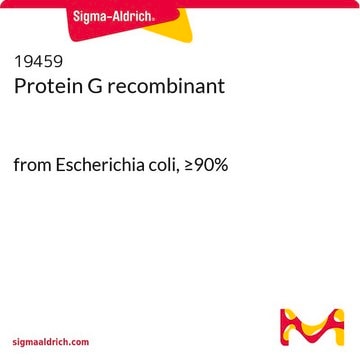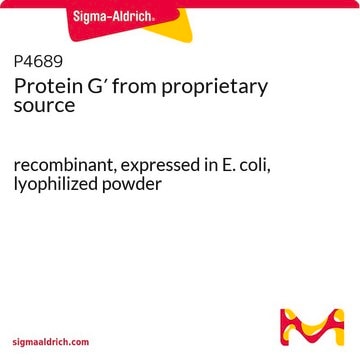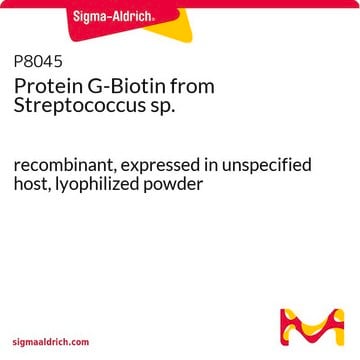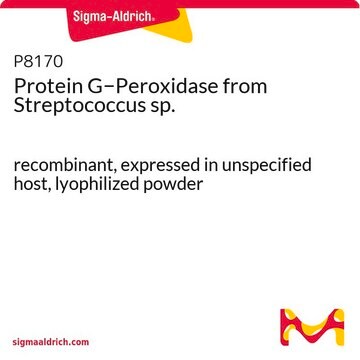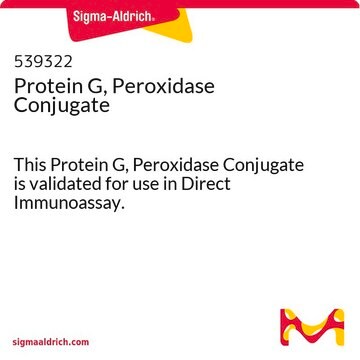08062
Protein G′ from Streptococcus sp.
recombinant, expressed in E. coli
Synonym(s):
IgG F(c)-Receptor
Sign Into View Organizational & Contract Pricing
All Photos(1)
About This Item
Recommended Products
biological source
bacterial (Streptococcus sp.)
Quality Level
recombinant
expressed in E. coli
form
lyophilized solid
mol wt
~30 kDa
capacity
~5 mg/mg, solid binding capacity (IgG)
storage temp.
−20°C
General description
Protein G, a cell wall protein, is obtained from group G streptococci. The extracellular part of this protein is made of two/three small domains or serum albumin binding (GA domains) and two/three immunoglobulin (IgG) binding domains (B domains).
Genetically engineered truncated protein G; retains affinity for IgG, but lacks albumin and Fab binding sites and membrane-binding regions.
Application
Protein G′ from Streptococcus sp. has been used in in vitro actin labeling assay.
Biochem/physiol Actions
Protein G can bind all the human and mouse IgG subclasses. It can bind to both the fragment crystallizable (Fc) and antigen-binding fragment (Fab) components of the antibody.
Physical form
lyophilized powder in a Tris-HCl buffer, pH 7.5
Storage Class Code
11 - Combustible Solids
WGK
WGK 3
Flash Point(F)
Not applicable
Flash Point(C)
Not applicable
Personal Protective Equipment
dust mask type N95 (US), Eyeshields, Gloves
Choose from one of the most recent versions:
Already Own This Product?
Find documentation for the products that you have recently purchased in the Document Library.
Customers Also Viewed
1405830
Nezlin R
The Immunoglobulins: Structure and Function null
Essential Guides for Isolation/Purification of Immunoglobulins
Layer A, et al.
Encyclopedia of Separation Science, 4553-4559 (2000)
Archana Kumari et al.
The EMBO journal, 39(14), e104006-e104006 (2020-06-23)
Cellular studies of filamentous actin (F-actin) processes commonly utilize fluorescent versions of toxins, peptides, and proteins that bind actin. While the choice of these markers has been largely based on availability and ease, there is a severe dearth of structural
Our team of scientists has experience in all areas of research including Life Science, Material Science, Chemical Synthesis, Chromatography, Analytical and many others.
Contact Technical Service



